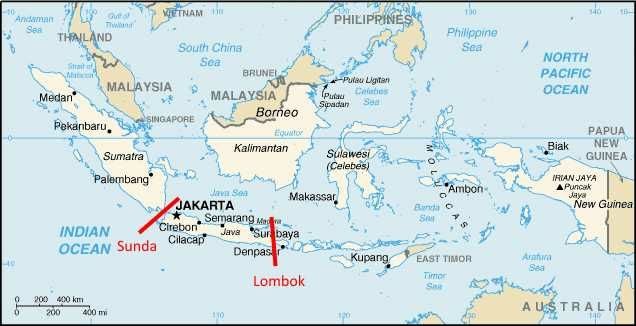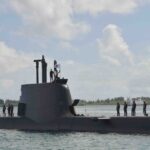
China’s navy is growing the fastest in the world, but a formidable challenger to harnessing its might in the Indo-Pacific looms
By Vikas Gupta
Defence News of India, 2 Dec 22
A fortnight ago, the navies of the four countries of the quadrangle – Australia, India, Japan and the United States of America (USA) – trained together in the Sea of Japan during the annual event called Exercise Malabar. This year’s Malabar, hosted by Japan in the Western Pacific, focused on fighting attempts by China’s People’s Liberation Army (PLA) to take control of Taiwan or enforce claims of Beijing on disputed islands in the South China Sea and East China Sea. This provides an opportunity to examine the war strategies of the Indian Navy (IN) against our two main adversary navies – the PLA Navy, or PLAN, and the Pakistan Navy (PN), which is far less capable than the PLAN, but a formidable adversary. However.
Malabar is a sophisticated and realistic exercise organized in turn by the four Quad marines. It creates “interoperability” by having the four partner navies cooperate in the fight against simulated contingencies. For example, an Australian submarine could simulate a PLAN submarine trying to sneak into the Indian Ocean through, say, the Sunda Strait. In Exercise Malabar, an Indian P-8I Poseidon maritime reconnaissance aircraft could be tasked with detecting the submarine, for which the superbly equipped P-8I aircraft would activate its sonar, radar and magnetic anomaly detectors. The opposing submarine’s signature would be passed to a library that would identify the ship by matching its signatures, in real time, with a global bank of warship signatures, painstakingly built up over time.

After locating and identifying the enemy submarine, the task of destroying it would be given to a P-8I, or an anti-submarine corvette, or one of our own submarines. To communicate with our submarines, India would use a VLF (very low frequency) signal, transmitted via a coast station, such as Indian Naval Ship (INS) Kattaboman, near Tirunelvelli, whose 471 meter high antenna is the tallest military structure in the world. Quad Marines conduct these simulated “locate-identify-destroy” exercises year-round, as part of anti-submarine patrols synchronized with their respective National Security Strategies (NSS).
To comply with the global maritime framework, India signed (1982) and ratified (1995) the United Nations Commission on the Law of the Sea (UNCLOS), which establishes a legal regime for the seas. International maritime law originated in 1603, when three Dutch gunboats seized a Portuguese Carrack (large freighter), with cargo so valuable that it doubled the annual income of the Dutch East India Company. The outraged Portuguese demanded the return of their ship and, after a heated debate in Holland over ethics, the famous jurist Hugo Grotius was hired to draft an international maritime treaty. The result was the famous Mare Liberum(the Open Seas), which postulates that the seas are the common heritage of humanity and that everyone enjoys freedom of action on the high seas, which Beijing disputes today.
Mare Liberumargues that, if two nations declare war on each other, they can destroy or seize each other’s ships anywhere in the world. If India and China were at war, Mare Liberumallows both to legitimately destroy each other’s ships in, say, the Atlantic or the Southern Ocean. The bloody German submarine (U-boat) campaign in World War II, which sank 3,500 Allied merchant ships and 783 German submarines, was legitimate, says Liberium mare, because the UK and Germany were officially at war. In the movie, Master and Commander, set in the Napoleonic Wars, British and French warships legitimately fought off the Galapagos Islands in the South Atlantic. And during the American War of Independence, the peaceful city of Madras found itself bombarded by French warships sailing from its colony, Mauritius.
Indian strategists mistakenly calculate that in a Sino-Indian war, the Indian Navy (IN) could legitimately bottle up Chinese shipping in the South China Sea by blockading the four entrances to the Indian Ocean – the Straits of Malacca, Lombok , Sunda and Ombai Wetar. In fact, Grotius did not plan to block ships from just one country. In the Indo-Pakistani War of 1971, the IN blockaded Karachi, but had to call it off after just one day because it would require a full international blockade that would not discriminate between ships. Theoretically, the IN could have sent warships or submarines to deter ships to and from Pakistan, but this would have led to unforeseen escalation risks. What if Beijing responded to an IN blockade of Karachi by announcing: “Our merchant arrives in Karachi, escorted by a destroyer and a frigate. Obviously, a flexible terminology is needed – for example “exclusion zone” or “mobile exclusion zone” – which could serve as a cover to impose a blockade on Malacca or Karachi.
The PN, although significantly smaller and weaker than that of India, has a plan. War games with the Lanchester equations – whichcalculate additional attrition between opposing forces engaged in violent confrontation – suggest that if the IN brought all its power over the PN fleet, it would cease to exist within 24-48 hours. Therefore, the PN avoided confronting the IN on the high seas, where Indian firepower would quickly devastate it. Instead, the PN is likely to retreat to coastal areas where land-based Pakistani aircraft would provide cover and different calculations would apply. Here, the IN would not take advantage of its numerical superiority.
Since the PN did not want to join the battle, the IN should locate and engage him in coastal waters. The first problem for the IN would therefore be to find a way to deny the air power of the Pakistani Air Force (PAF). The solution came in 2001, when the induction of the Israeli Barak missile, with its accuracy and range of 15 kilometers, provided the IN with its first powerful air defense capability. This has now been enhanced with the Long Range Surface-to-Air Missile (LR-SAM), which greatly extends engagement ranges to 70 kilometres. This allows the IN to approach Pakistani shores with greater impunity.
Pakistani Long Range Maritime Patrol (LRMP) aircraft like the P-3C Orion or IN P-8I Poseidon now play a major role in naval warfare. These LRMP aircraft offer air search and attack options, with operating endurance of up to 16 hours and a weapons payload of anti-ship missiles, anti-submarine torpedoes and depth charges. marines.
An LRMP aircraft can fly stealthily, using electronic warfare suites to avoid detection while maneuvering into a position from which it can launch an anti-ship missile (ASM). However, his location is compromised as soon as he fires the missile. For the target ship, or flotilla, the challenge is twofold: first, the incoming missile must be shot down before it hits a ship. Second, integral air resources must ensure that the aggressor aircraft does not escape.
The math goes against the LRMP plane of the PN. The LR-SAM which will now be standard on new IN warships has a range of 70 kilometres, well beyond the approximately 50 kilometer range of the Pakistani ASM. With INS Vikramaditya and INS Vikrant fielding LR-SAM systems and launching MiG-29K fighters from their decks, the question of a Pakistani LRMP aircraft launching a missile and running away should not arise.
Finally, it should be noted that, with the PLAN being the fastest growing navy in the world, the eventual provision of basic rights by Pakistan, Sri Lanka and by East African states like Djibouti provides a forward presence in the Indian Ocean. Even then, the Quad’s rapprochement with the Australia-UK-US (AUKUS) grouping would be a formidable adversary, evolving into the creation of a “thousand-ship navy” that controls the PLAN in Indo -Peaceful.






